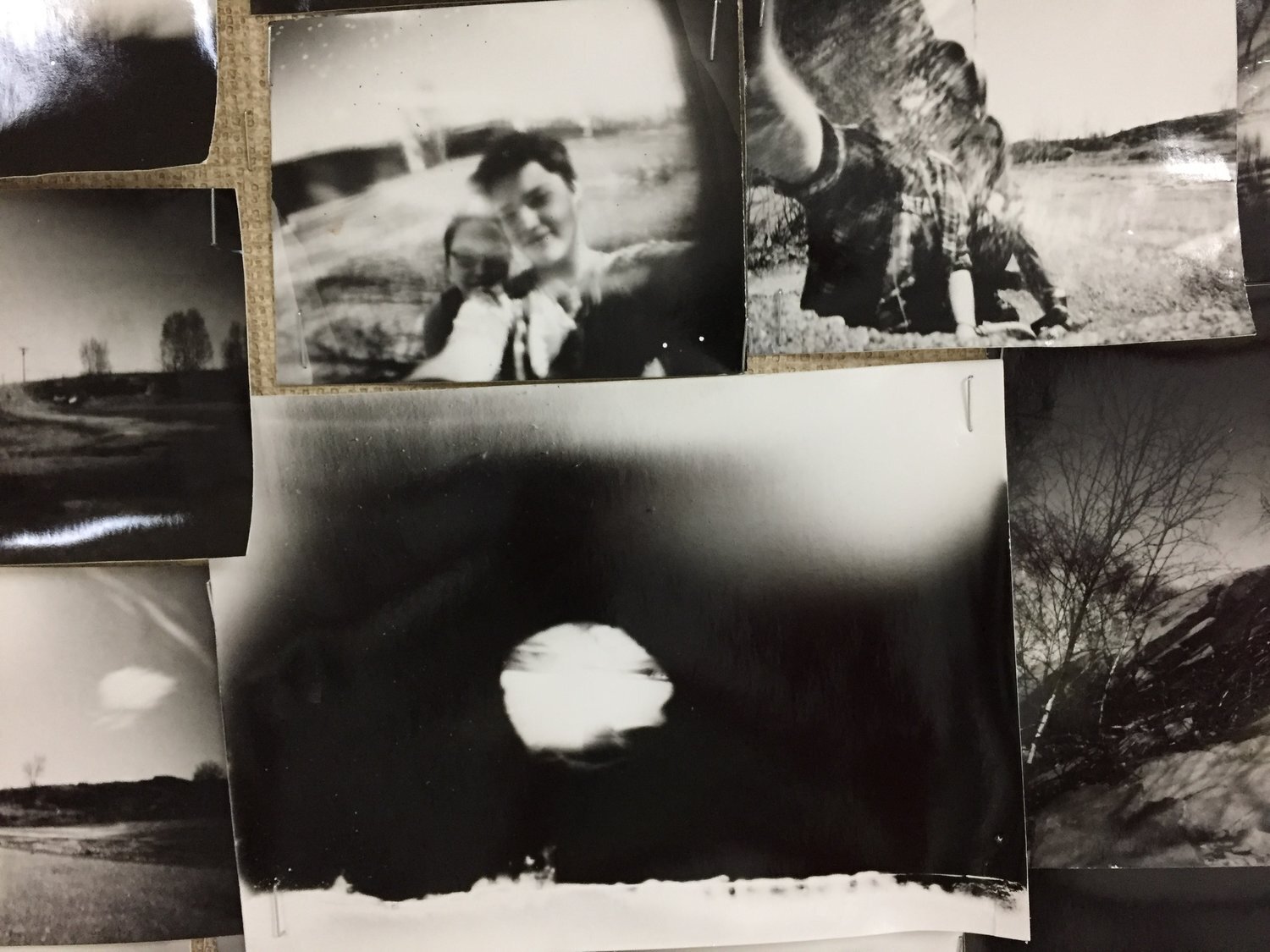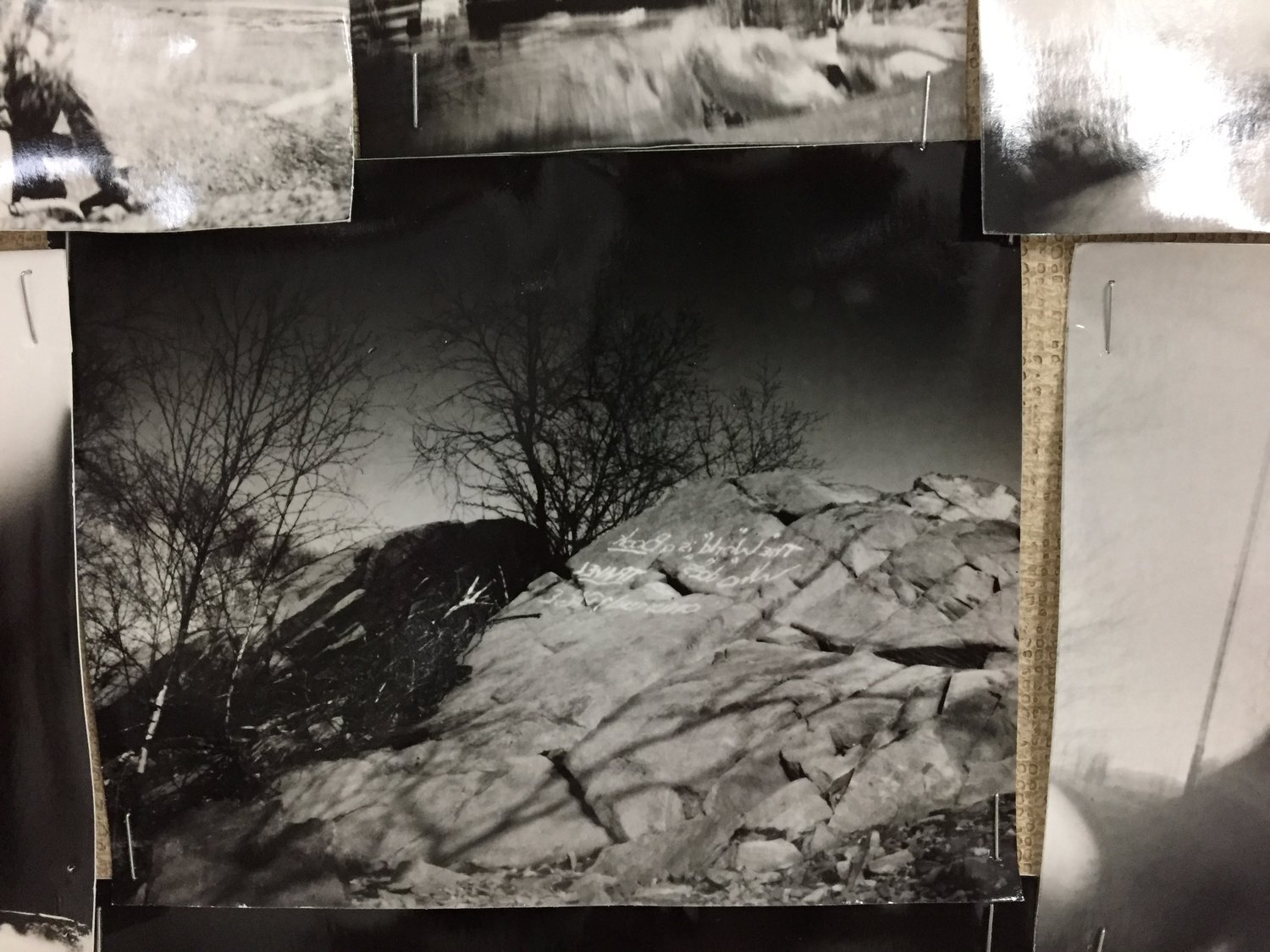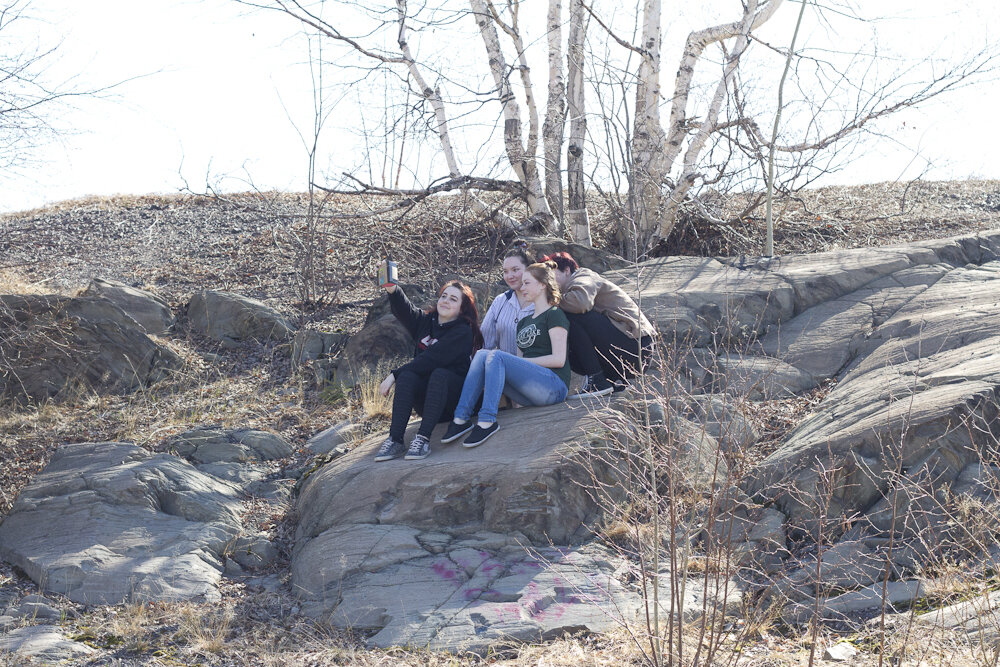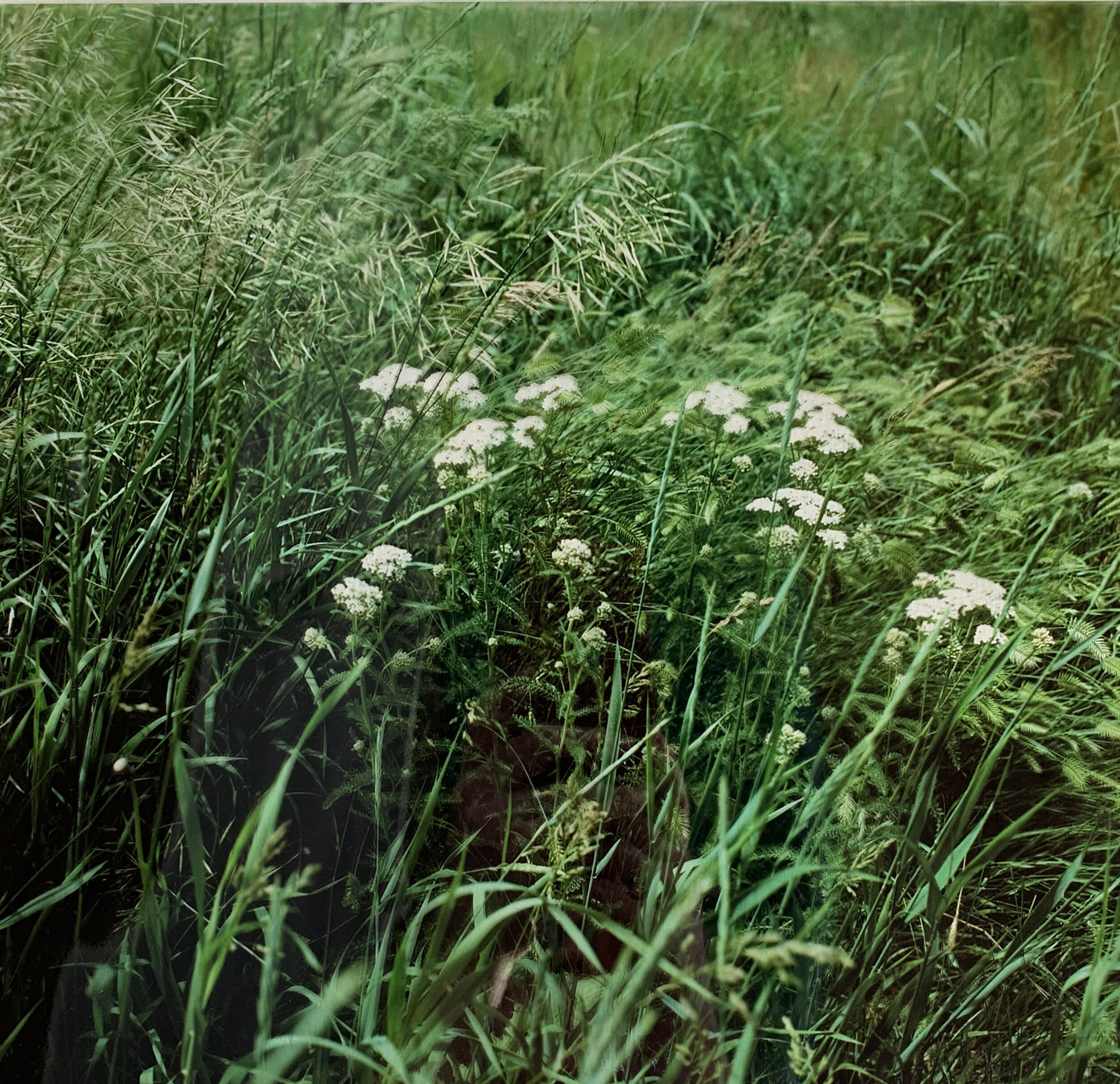lindsey Bond-Garcia(she/her)
MFA Intermedia
Lindsey Bond CV
short Biography
Lindsey Bond-Garcia (she/her) is a white body, intermedia artist-mother born in amiskwacîwâskahikan (Beaver Hills House) or Edmonton, near the North Saskatchewan River. Her intermedia practice combines photography and textiles to critically engage with her settler family archives, working to unsettle inherited narratives and build alternative archives through intergenerational and collaborative art-making.
Lindsey received her MFA in Intermedia at The University of Alberta, her BFA in Photography Arts from Emily Carr University of Art + Design and she studied Visual Communications at Edinburgh College of Art, Scotland. Her artwork has been exhibited in The Alberta TREX Program, Gallery 1C03, Gallery 44, MAWA, Platform Centre for Photographic + Digital Arts and The Richmond International Film + Media Arts Festival. Visit @lindseybondstudio or www.LindseyBond.ca
long BIOGRAPHY
Lindsey Bond-Garcia (she/her) is a white body, intermedia artist-mother born in amiskwacîwâskahikan (Beaver Hills House) or Edmonton, near the North Saskatchewan River. Lindsey’s art practice is rooted in nurturing a blended Salvadorian (through marriage) and Canadian (Scottish, English, German heritage) family of four. Her intermedia practice explores photography and textiles to disrupt her settler family archives and build alternative-archives.
Using slow textiles (appliqué, embroidery), and photographic/ print processes Lindsey grows and sews conversations that interweave family stories, memory sites and settler repair work. Lindsey works inter-generationally with her children, Salvadorian mother-in-law and more-than-human-neighbors to sew entangled family stories on Treaty 6 Territory. Growing, blending and sharing herbal teas, eco-printing and making plant-based ink offers processes for her and collaborators to connect and question what stories are held together and which ones fray? The roots, leaves, folds, and stitches are where her responsibilities emerge to sew and share more relational family legacies.
Lindsey received her MFA in Intermedia at The University of Alberta, her BFA in Photography Arts from Emily Carr University of Art + Design and she studied Visual Communications at Edinburgh College of Art, Scotland. Lindsey is a self-taught textile artist whose Grandmothers were expert seamstresses, and she thinks of them often when she sews. Lindsey is a dedicated cultural worker, teacher and volunteer in prairie Artist-Run-Centres. Outside of her art practice, she works with Gallery@501 as the Visual Arts + Education Programmer, organizing inclusive arts education for all ages and abilities.
Her artwork has been exhibited in The Alberta TREX Program, Gallery 1C03, Gallery 44, MAWA, Platform Centre for Photographic + Digital Arts and The Richmond International Film + Media Arts Festival. Most recently, her work was included in Craft & Craftivism: A Biographical Dictionary of Contemporary Ceramic, Fibre, and Glass Artists in Canada.
Visit @lindseybondstudio or www.LindseyBond.ca
Artist Statement
I am an intermedia artist-mother born in amiskwacîwâskahikan (Beaver hills House) or Edmonton on Treaty 6 Territory. Over the last six years, my art practice has explored textiles as a way to unsettle personal and public photo archives fostering intergenerational and relational art making.
Before beginning my MFA, I primarily worked as a photo-based artist creating alternate archives about the Edmonton Remand Centre chalk messages (ERC Newspaper) and counter colonial stories about the Canadian railway (Negotiating spaces). Since then, I have continued to grow my practice while becoming a mother, working with Prairie Artist-Run Centres, such as Mentoring Artists for Women’s Art (MAWA) and Art City Inc. and attending residencies including Wood Land School at Plug In ICA and Train of Thought with Jumblies Theatre. Working in this way created a strong community foundation from which I could begin acknowledging complex settler colonial prairie narratives and work towards “everyday decolonization” to unsettle, grapple and repair my own family stories.
To navigate personal and public interwoven histories, I decided to shift to incorporate inherited textiles into my photography practice. This decision was put into practice when I inherited my family “red rose tea tin” photo archive and sought to develop a stronger relationship with my elderly Aunts who practiced needlework. I created my MFA thesis work called Ecosystems of Memory, where I re-storied my Aunts stories and our family photo archive images through large scale photographs, textiles -a large and heavy appliqué quilt and photo-sculpture series in 2021. From there, I started The Collab Quilt Collective—an ongoing, community-based textile project that broadens this work beyond my own family stories and into a collective community dialogue.
My practice engages in archival intervention: reworking images from my white-settler family’s “red rose tea tin” archive and the public Canada West magazine archive to trouble inherited pioneer settler narratives and stitch new relationships with Treaty 6 Territory and kisiskâciwani-sîpiy / North Saskatchewan River. This work is taking form through the quilted family whirlpools and embroidered photo-polymer gravure prints. Currently, she is also translating her mother-in-law’s oral stories into an inter-generational and collaborative appliqué quilt for her 80th birthday.
I currently nurture a blended Salvadorian - Canadian family of four. I am descended from Scottish (MacLean), English (Reynolds/Bond), and German (Weich/Hoffman) families who farmed on Treaty 6 and 7, the ancestral lands of nêhiyaw, Métis, Blackfoot, Nakota Sioux, Dene, Anishinaabe and Inuit. The last four generations of the Reynolds/ Bond family lived near Lone Rock, SK (Treaty 6), the Hoffman family from Hannah/ Okotoks, AB (Treaty 7) and the MacLean family from Fredericton, NB, unceded territory of the Wəlastəkwiyik (Maliseet) Peoples.
Previously in 2017-2019, Bond was in the service of fifty Indigenous women artists and MAWA as the Project Coordinator for Resilience, a national billboard project curated by Mohawk curator, Lee-Ann Martin. Resilience is a public celebration, a creative act of reconciliation and commemoration of fifty (50) contemporary artworks by First Nations, Inuit, and Métis women artists. Produced by Mentoring Artists for Women's Art and funded through Canada Council's New Chapter grant.
In 2015/16, Lindsey worked on Imagine Home, a Youth WITH ART Community Art Project with seven youth from Among Friends, a Inclusion Winnipeg program. Supported by the Winnipeg Arts Council and City of Winnipeg, the youth investigated their relationship to place and identity through photography, drawing and writing culminating in a collection of zines and exhibition of colour Holga photography.
Ancient Selfie: An Exploration of 4 x 5 Camera Portraiture by Art City Participants





Experimental Photography (pinhole cameras) at Hapnot Collegiate, Flin Flon, MB
As an Artist in the Schools, through the Manitoba Arts Council, I teach Experimental Photography program where students learn about analogue image making through the creation of photograms, pinhole cameras with the option to work up to building a life size Camera Obscura and mural. This program builds students’ awareness about the inner workings of early cameras and optics by exploring the photographic fundamentals such as: perspective, focus, light theory and composition. Within natural and staged environments, students will also create ephemeral drawings, tracings and movements that capture and connect them to their local and national photographic milieu. Students will learn about specific artists and examples where early photography and painting and nature intersect, encouraging the class to reconsider the relationship between the two mediums historically and in their lived experience today. The experimental nature of this program makes photography an accessible and inclusive art form, opening up the creative potential of students. This program encourages the discovery of one’s own vision through a hands-on-learning, active looking and of course a bit of magic (or sleight of hand).
In June of 2015, Bond was a guest artist on Train of Thought, a community arts journey (with a company of 30+ artists, writers, dancers and philosophers) from west-coast to east-coast of Canada focusing on collaborations and alliances between First Nations and settler/immigrant artists and communities.




